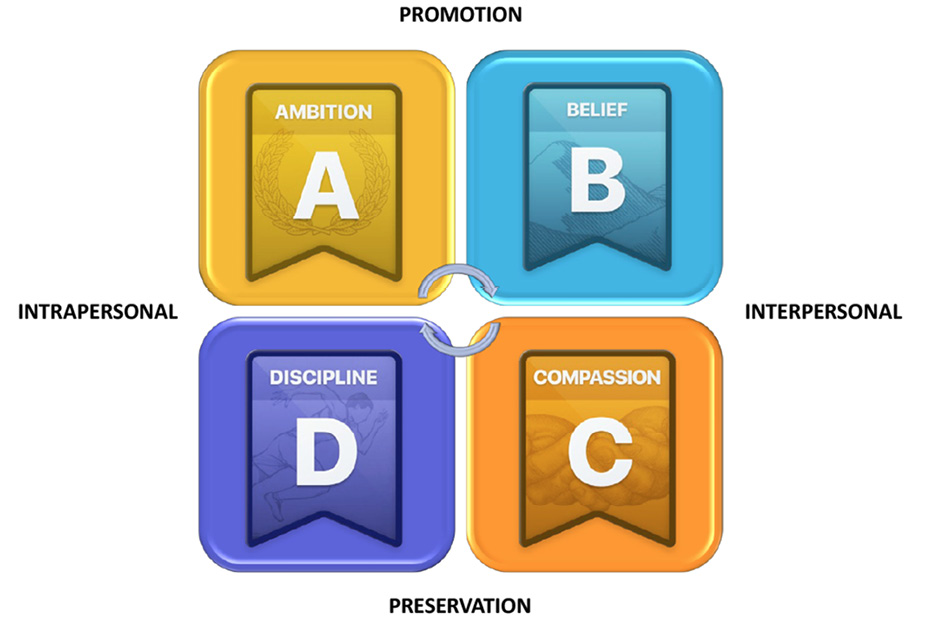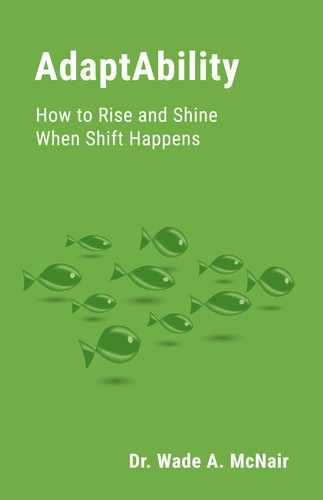AdaptAbility and RelateAbility
Better Together
Understanding how people communicate and are motivated is as important as understanding how they experience each stage of change. It really isn’t a question of which you need more, but rather the integration of both skillsets to maximize our effectiveness.
So often, change efforts fail because there is a lack of trust and low levels of RelateAbility when teams interact with each other. By building AdaptAbility and RelateAbility skillsets together, we can be far more effective in managing the people side of change – be it in our own lives or in our workplaces.
In short, RelateAbility is the ability to effectively relate to others. RelateAbility also includes the potential for transformational relationships with each person we interact with, personally and professionally. In academic terms, we also refer to RelateAbility as Emotional Intelligence.
RelateAbility uses the TeamRelate Model as a tool to help build our competency and skill. The TeamRelate Model has two primary components: Communication Styles and Core Convictions.
AdaptAbility and Communication Styles
Understanding Communication Styles
Communication Style is a description of an individual’s natural preference of focus and function. Every individual has components of all Communication Styles, but it is the strongest or most natural style that dominates the rest.

For quick reference, below is a summary of the four Communication Styles:
- Director (D): The Director style refers to the degree to which an individual needs to be in charge or in control. They are highly task-focused and prefer to interact with and lead others.
- Encourager (E): The Encourager style refers to the degree to which someone is externally and socially-oriented. They are highly relationship-focused and prefer to interact with and influence others.
- Facilitator (F): The Facilitator style refers to the degree to which an individual is purposeful and patient. They are highly relationship-focused and prefer to work in small groups or collaborate behind the scenes.
- Tracker (T): The Tracker style refers to the degree to which an individual is careful about “tracking down” and taking care of details. They are highly task-focused and prefer to work in small groups and lead processes.
Communication Styles and Change
When working with people, we want to communicate in a way that builds connection. Below is a quick summary of how each Communication Style interacts, specifically what they say, what they hear, and what they need in the practice of change management. Remember that in change, they will demonstrate these behaviors at different levels of intensity and duration depending on the importance and impact that change has in their personal viewpoint.
Directors (D) need to be in charge and in control. They are strong-willed, and they expect their ideas and decisions to prevail and to be respected.
- What they say: Only what is seen as relevant, brief, and bottom line
- What they hear: Sometimes only what they want, and will tune out if too much detail is given
- What they need: For you to get to the point, be factual, and less emotional
Encouragers (E) are highly sociable, people-oriented, outgoing individuals, who are good communicators with a persuasive Communication Style. They are good at encouraging and motivating others.
- What they say: They say a lot, often exaggerate to make a point, and speak with emotion
- What they hear: Broad strokes of conversations, often missing details. They tend to interrupt
- What they need: They need you to let them talk and share their emotional enthusiasm
Facilitators (F) tend to be a calming force who prefer supportive roles. They are nice people to have around because they seek understanding in situations and work hard to gain approval. Facilitators pride themselves on being part of the team, as well as their role in facilitating team effectiveness.
- What they say: They don’t say much and tend to be reserved and speak in friendly, gentle tones, often asking questions for better understanding
- What they hear: Everything. When others won’t listen, Facilitators will
- What they need: They need to be appreciated for listening
Trackers (T) prefer to follow-up and carry out assignments given to them by authorities they respect rather than to initiate action steps conceived on their own.
- What they say: Everything in detail. They give you the whole story
- What they hear: Everything, but want more. Need detail or can feel misled
- What they need: More than anything, they need to be understood. Listen to them, and ask for clarity
AdaptAbility and Core Convictions
Understanding Core Convictions
The four TeamRelate Core Convictions are based upon the following two Dimensions: Intrapersonal/Intrapersonal and Preservation/ Promotion.

Each individual has their own core values and set of beliefs. To try and create a framework that takes into consideration every value and every belief of every person would be foolish. Instead, TeamRelate looks at four Core Convictions that have the greatest impact on RelateAbility. They are (A) Ambition, (B) Belief, (C) Compassion, and (D) Discipline.
For quick reference, below is a summary of the four Core Convictions:
- Ambition: Ambition refers to the degree to which an individual is forward-looking and proactive in achieving significant goals.
- Belief: Belief refers to the degree to which an individual trusts in and lives according to a predefined system of truth.
- Compassion: Compassion refers to the degree to which an individual feels compelled to help others.
- Discipline: Discipline refers to the degree to which an individual is able to sustain focus and dedication toward the completion of a task or goal.
Core Convictions and Change
When working with people, we want to communicate in a way that promotes engagement. As opposed to Communication Styles, Core Convictions change over time, and their development has a significant impact on an organization and an individual’s capacity to work within certain environments. Understanding how each Core Conviction contributes to organizational success, should help in developing the sense of urgency and align motivations that are essential to the change management process. Here is a brief overview of each Core Conviction and the impact they have on individual and team engagement.
- Ambition (A): If Ambition is the strongest conviction, these individuals are proactive in reaching goals—an achiever. The conviction of Ambition provides an organization with energy to complete projects and inspire teams. Establishing a sense of urgency and tapping into the future vision is where the conviction of Ambition can be leveraged, especially in times of change and uncertainty.
- Belief (B): If Belief is the strongest conviction, these individuals value integrity, fairness, and moral excellence. The conviction of Belief can provide an ethical perspective when difficult decisions need to be made. Decisions in change management have consequences, and those with Belief as a core conviction help promote the organizational values and culture, especially in times of change and uncertainty.
- Compassion (C): If Compassion is the strongest conviction, these individuals possess a rare quality for giving to others in need. The conviction of Compassion provides an organization with a client-centered perspective. Those with Compassion as a core conviction provide a much-needed balance to the change process, as their focus will be on the impact of the change on people, not just on profits.
- Discipline (D): If Discipline is the strongest conviction, individuals have the ability to sustain their focus and dedicate themselves to the completion of a task or goal. The conviction of Discipline provides an organization with tenacity, helping them stay the course and never lose sight of their stated objective and goal. When many change efforts fail because they lack process or lose their sense of urgency, those with Discipline as their core conviction will be essential to keeping the project on task, in scope, and within budget.
Having diversity of Core Convictions in your change leadership will help provide insight for the project as well as assist in understanding the needed messaging and change management practices that will best motivate every individual involved in the change initiative.
For more information about RelateAbility, Communication Styles, and Core Convictions, please read the book, “RelateAbility: Working Together To Make Work Life Better” by Wade McNair and Ted Malley.
